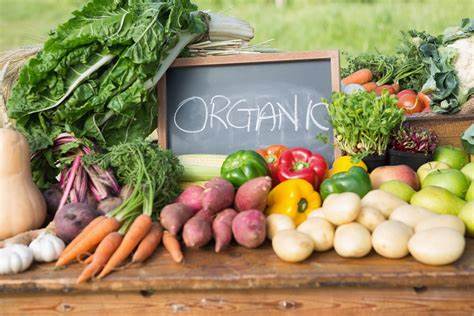Growing your own organic vegetables at home is not only rewarding but also a sustainable way to ensure a fresh and healthy food supply. Whether you have a backyard, balcony, or even just a sunny windowsill, you can cultivate a thriving vegetable garden right at home. Here’s a step-by-step guide to help you get started on your journey to homegrown goodness.

1. Choose the Right Location
Select a sunny spot in your home or yard where your vegetable plants will receive at least 6-8 hours of direct sunlight each day. If you’re gardening indoors, place your plants near a south-facing window where they can soak up plenty of sunlight. For outdoor gardens, choose a location with well-drained soil and easy access to water.
2. Prepare Your Soil
Before planting, prepare your soil by loosening it with a garden fork or tiller and removing any weeds, rocks, or debris. Amend the soil with organic matter such as compost, aged manure, or peat moss to improve fertility, drainage, and moisture retention. Aim for a loose, crumbly soil texture that allows roots to penetrate easily and water to flow freely.
3. Choose Your Vegetables
Select vegetables that are well-suited to your climate, growing conditions, and available space. Consider factors such as sunlight, soil quality, temperature, and water requirements when choosing your crops. Start with easy-to-grow vegetables such as tomatoes, peppers, lettuce, spinach, carrots, and herbs, and gradually expand your garden as you gain experience.
4. Start from Seeds or Seedlings
Decide whether you want to start your vegetable plants from seeds or purchase seedlings from a nursery or garden center. Starting from seeds allows you to choose from a wider variety of vegetables and control the entire growing process from start to finish. Seedlings, on the other hand, offer a head start and may be preferable for beginners or those with limited time or space.
5. Plant Your Vegetables
Plant your seeds or seedlings according to the spacing and depth requirements specified on the seed packet or plant label. Water your newly planted vegetables thoroughly to settle the soil and provide moisture to the roots. Consider using mulch such as straw, wood chips, or shredded leaves to conserve moisture, suppress weeds, and maintain even soil temperatures.
6. Provide Adequate Watering
Water your vegetable plants regularly to keep the soil evenly moist but not waterlogged. Use a watering can, hose, or drip irrigation system to deliver water directly to the root zone and avoid wetting the foliage, which can increase the risk of disease. Adjust your watering frequency and volume based on weather conditions, plant growth, and soil moisture levels.
7. Fertilize Naturally
Feed your vegetable plants with organic fertilizers such as compost, compost tea, or fish emulsion to provide essential nutrients and promote healthy growth. Apply fertilizers according to package instructions or as needed based on soil tests and plant performance. Avoid over-fertilizing, which can lead to nutrient imbalances, excessive vegetative growth, and environmental pollution.
8. Monitor for Pests and Diseases
Keep an eye out for common pests such as aphids, caterpillars, and beetles, as well as signs of disease such as leaf spots, wilting, or yellowing foliage. Practice proactive pest management strategies such as hand-picking pests, using row covers, and companion planting to deter pests naturally. Treat pest infestations and diseases promptly with organic methods such as neem oil, insecticidal soap, or beneficial insects.
9. Harvest with Care
Harvest your vegetables when they are ripe and ready to eat for the best flavor, texture, and nutritional value. Use clean, sharp garden shears or scissors to harvest vegetables to avoid damaging the plants or spreading disease. Harvest leafy greens and herbs regularly to encourage continuous growth, and harvest fruits and root vegetables as they reach maturity.
10. Enjoy Your Bounty
Finally, savor the fruits of your labor by enjoying your homegrown organic vegetables fresh from the garden. Incorporate them into your favorite recipes, salads, soups, and snacks, or share them with family, friends, and neighbors. Take pride in knowing that you’ve grown your own food sustainably and contributed to a healthier, more self-sufficient lifestyle.
Conclusion
Growing your own organic vegetables at home is a rewarding and empowering experience that allows you to connect with nature, nurture your body, and reduce your environmental footprint. By choosing the right location, preparing your soil, selecting the right vegetables, starting from seeds or seedlings, planting properly, providing adequate water and nutrients, monitoring for pests and diseases, harvesting with care, and enjoying the fruits of your labor, you can create a thriving vegetable garden right in your own backyard or balcony. Whether you’re a seasoned gardener or a novice, there’s nothing quite like the satisfaction of growing your own food and enjoying the taste of freshly harvested vegetables grown with love and care.
